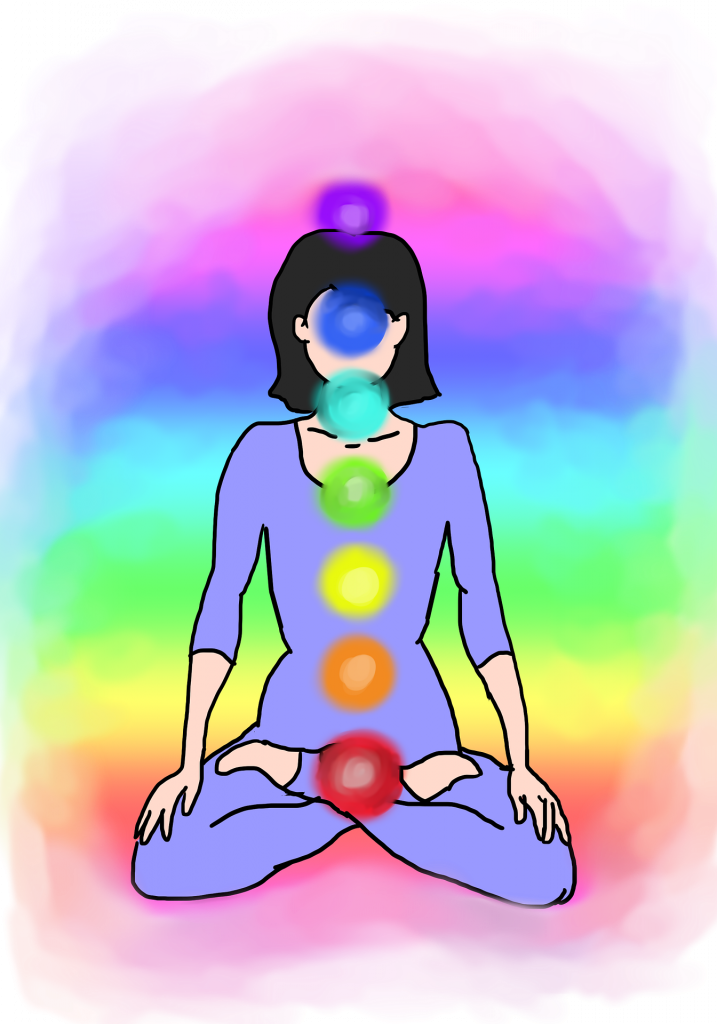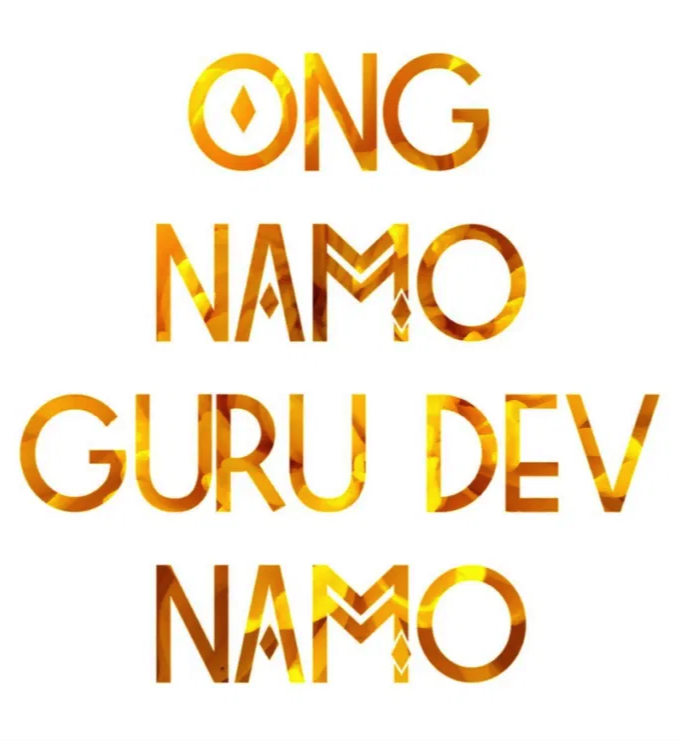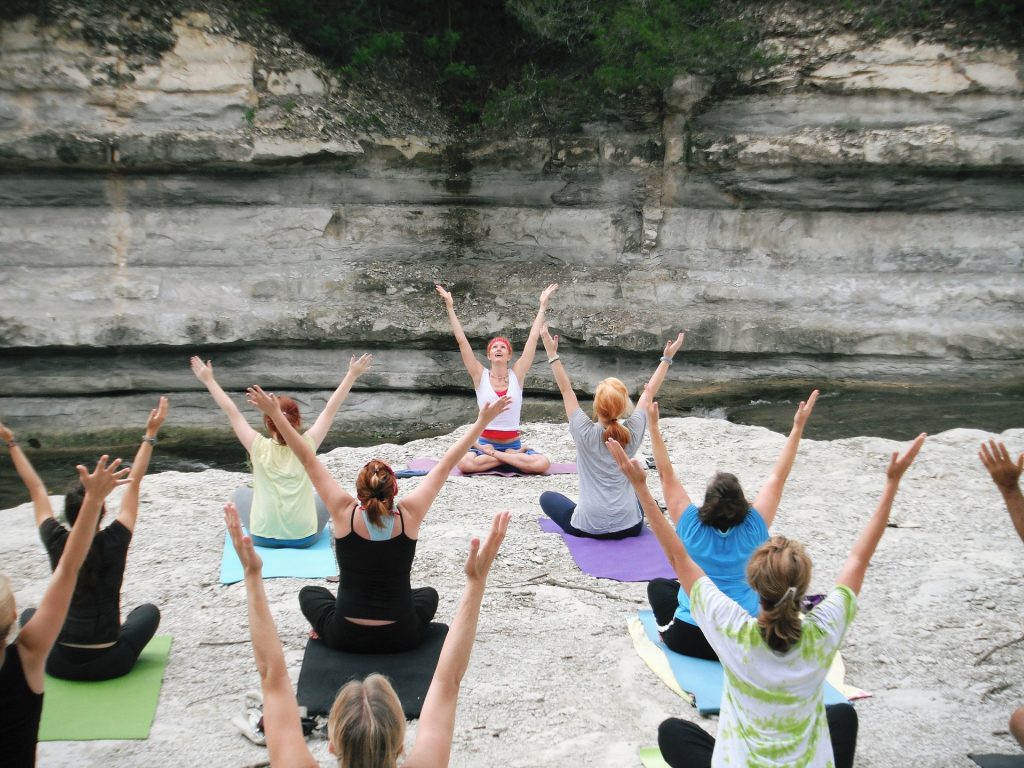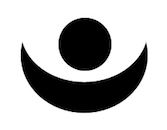Often referred to as the ‘Yoga of Awareness’ or ‘Holistic Yoga’, Kundalini yoga is a practice fusing several ancient practices and principles to enable the practitioner to manage and manipulate the energetic flow in the body. Kundalini includes the practices of Bhakti yoga (devotion and mantra chanting) Raja yoga (meditation, mental and physical control) and Shakti yoga (the expression and control of energy or power).
A kundalini yoga class can leave you feeling like you’ve been to therapy, done a workout and felt the earth move – vibrationally speaking. Kundalini is a modality by which practitioners can deeply cleanse the nervous system, tune into their inner potential and release energetic blockages or imbalances to find a peaceful life and a balanced outlook. This isn’t just yoga to make the body feel better – this is yoga that can create shifts in every area of your life.

Historically speaking…
The exact date and emergence of kundalini tantra is unclear, but the practices of kundalini energy manipulation and philosophy are mentioned in the Upanishads (vedic yoga texts) dating back to 1000 BC. The term Kundalini means a spiritual energy or life force located at the base of the spine and often represented by a coiled snake. Practicing Kundalini yoga awakens the kundalini shakti (energy of universal creation) and allows it to rise up through the chakra system along the spine to the crown of the head. Each chakra is a wheel or hub of energy at a particular point in the spine where energy channels intersect. Through practicing asana (physical postures), pranayama (yogic breathing techniques) and mantra it is possible to direct the flow of energy through the chakras to have profound effect on the nervous system, the mind and the flow of life. If you’ve ever felt like a passenger in your own life, kundalini may be what you’re searching for.
The practice of kundlini yoga historically was part of tantric tradition. Tantra means secret mantra and as such, the practice was the preserve of the very few privileged gurus and selected students. The modern presentation of Kundalini yoga that we often see today is a blend of several traditions brought to the mainstream by Yogi Bhajan in the 1960’s. Practice involves the use of Kriyas – yoga ‘sets’ of asana, pranayama, meditation and the use of yogic muscle locks or bandhas to direct energy flow and prepare the nervous system, mind and body for the flow of kundalini awakening and rising through the chakra system.

On wearing white
Traditionally teachers and students in kundalini class wear outfits of all white. The choice of white as the universal colour of practice is that colours have an effect on consciousness. Many holistic traditions refer to colours as being inseparably connected to energy points in the body. The chakra system is strongly identified with colours at points from the base of the spine to the crown. The Aura of each individual presents as colours depending on energy flow and interaction.
White is the colour that represents all 7 colours of the chakra system. By wearing white, we project the auric body further away from our physical form, making the energetic changes of our kundalini practice more profound. Wearing white contributes to the efficiency, profundity and progressive effect of our practice. Having said that…your practice is personal to you. If you feel more comfortable or you feel you have a deeper connection to another colour, you can wear whatever assists your practice.
Bowing to the truth within you
Each Kundalini session (following modern principles of Yogi Bhajan) starts with the process of tuning in. We do this by rubbing the palms together, pressing the hands together at the centre of the chest and engaging in the powerful mantra Ong Namo Guru Dev Namo three times. This is your recognition of the universal truth within; bowing to your own destiny.
What to expect
Kundalini yoga is weird – there I’ve said it. Now that’s out of the way, let’s look at what a typical class will involve. After tuning in, we start the Kriya – a set of postures (some of which may be familiar to you if you’ve practiced other forms of yoga), breathing techniques, muscle locks and mantra chanting (silently or out loud). Kundalini isn’t as dynamic as a vinyasa class – you won’t be getting up and down from your mat over and over – but it is still challenging. We use rapid repetition and controlled movements to channel energy. You will feel this as heat, emotional release, fatigue or muscle shakes (along with many other possible effects). It’s a full body, mind and spirit experience in each session. Classes will close with mantra, meditation or sound experiences.
Join me on Wednesday evenings twice a month to embark on the extraordinary journey that is kundalini yoga. Awaken your divine energy in 2021 and make this year the year you reclaim happiness.

Community Classes are Back!
I am so very pleased to say that community classes start again this week! All venues have given the go-ahead for classes to resume. There will be new guidelines and procedures for using the community venues in light of COVID-19, but if we all do our bit, we should be able to practice safely together.
The venues are luckily large enough for us to practice and observe social distancing without restricting numbers. We may need to alter the room layout to practice in rows rather than in the circular layout we usually, use, however each class will be assessed based on participants at the time.

Importantly, as part of track and trace measures, you will be required to provide name, address and contact details so that you can attend class. You can do this in advance by booking online, or you can do this when you arrive at class (please allow extra time for this).
The main points to bear in mind when practicing at community venues are as follows:
- Please queue outside the building allowing 2 metres between each person prior to entering the halls
- A one-way system for entry and exit will be in operation. Please follow signage at the venue
- Hand sanitisers will be available for use at the venues
- There will be no yoga equipment available to borrow; please make sure you bring everything you need with you
- Kitchens will be out of use at all venues. Toilets will be in use to allow one person at a time to use the facilities
- Place your belongings on the floor in the hall to keep use of furniture to a minimum. If you need to use a chair for your practice you can do so, but please leave it set out in the hall for cleaning afterwards.
- Doors and windows will be open for ventilation purposes. Please try not to touch door or window handles unless necessary
- Mats will be spaced 2 metres apart during the class
- You can choose to wear a mask before or during your practice – please make your own assessments of whether this is appropriate for you
- Please make your own assessments of your health and individual risk factors in taking group classes
- If you feel unwell at all, do not attend class
- You will be required to provide name, address and contact details at the time of booking or on entry to the class (please allow extra time for this)
- Payment should be contactless where possible. Loyalty cards can still be used (and cash if that is your only means of payment)
- There will be no late entry once the class has started due to data collecting requirements. Please arrive in good time or book online to provide details in advance of the class.
If you have any questions, please get in touch [email protected]
See you soon!
Namaste

